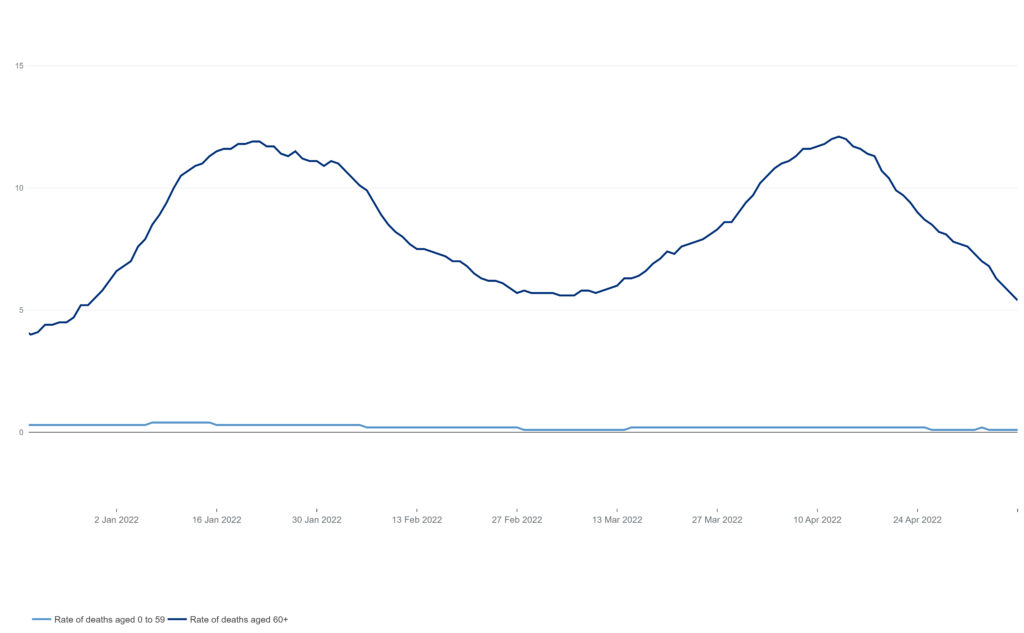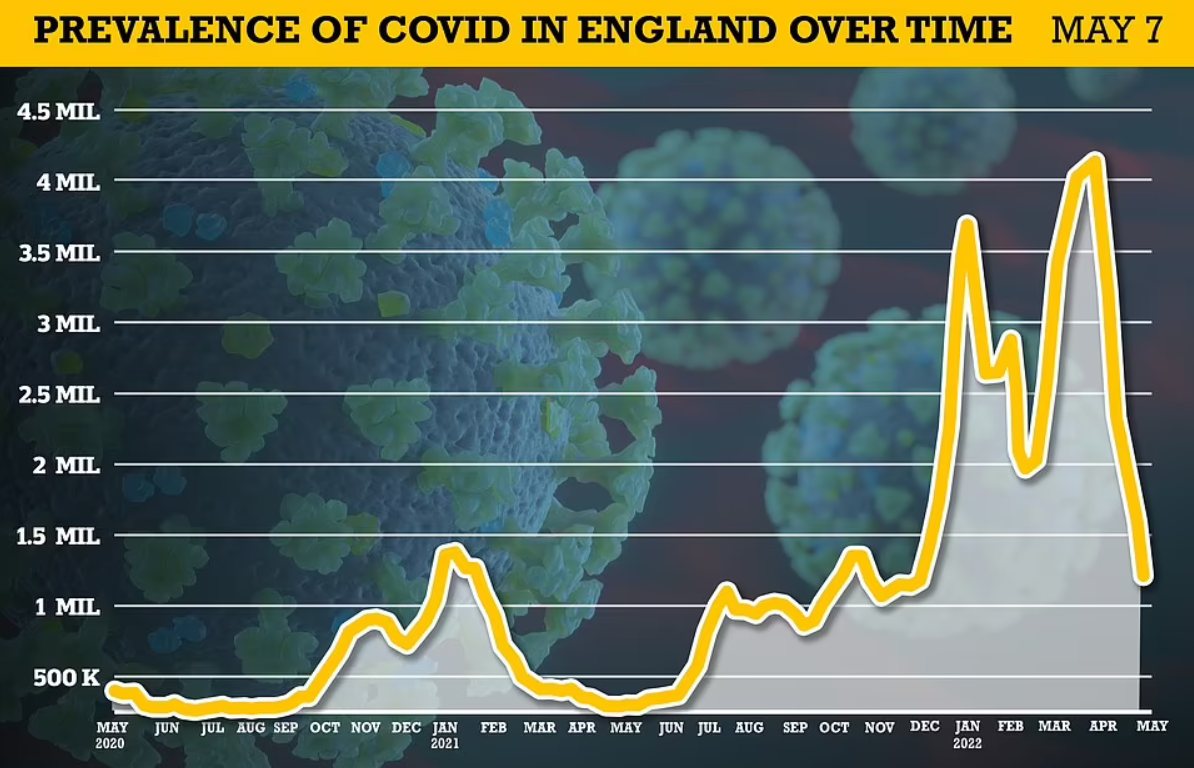Covid levels continued to drop in England last week, falling to their lowest levels since the start of December before Omicron took off. MailOnline has more.
The Office for National Statistics (ONS) estimates 1.2 million, or one in 45 people, were carrying the virus on any given day in the week to May 7th, down a quarter on the previous week.
It marks the fifth week in a row that the ONS’s weekly infection survey – now the best barometer of the outbreak – has reported a week-on-week fall in cases, despite no Covid restrictions being in place.
The Government is relying on the study, based on swabs of 120,000 random people, to track the virus now that free testing has been axed for the vast majority of Britons.
Today’s estimate for England is the lowest since the week ending December 16th, when 1.2m people were also estimated to have been infected. At that point, the Omicron strain was just starting to take off and in the following weeks there were mounting calls to follow some EU countries in enforcing another lockdown.
Ministers also resisted renewed calls from NHS bosses for tougher restrictions last month when the BA.2 variant, an off-shoot of Omicron, pushed rates to record-highs.
Meanwhile, the ONS estimates one in 35 people were carrying Covid in Wales and Scotland last week and one in 55 in Northern Ireland.
It’s good to see the Mail drawing attention to the fact that these declines happen without the need for restrictions. Interesting that Scotland is doing worse than England despite keeping masks and vaccine passports in place for longer.
Another interesting point is that after the large Omicron wave, which reached around 8% prevalence in England during March, the current 2.2% prevalence seems low. However, it’s actually higher than was reached during the entire Delta wave during the latter part of 2021.
The breakdown by age shows an interesting contrast between Omicron BA.1 and BA.2 waves. BA.2 spread broadly throughout the age groups, and unusually for Covid had higher prevalence in older people than younger.
BA.1 on the other hand was much higher in younger people, with the 70-plus age group not getting above 3% and the 50-69 age group scarcely above 5%.
Despite this huge difference in prevalence in the most vulnerable age groups between the two waves – in the 70-plus age group, BA.2 was around two and half times more prevalent than BA.1 – the number of deaths in the two waves has been similar, peaking around the same level and with slightly fewer deaths overall in the BA.2 wave.

This seems to imply BA.2 was half as deadly as BA.1 or even lower. What explains this apparent difference in infection fatality rate? No vaccine booster programme was delivered between the two waves. Is it because it’s not winter anymore, so a seasonal effect, or is it some inherent property of the virus? Part of it will be mortality displacement, with many of those at high risk of death dying in the BA.1 wave so no longer around to succumb to BA.2. Whatever the cause, it’s good to see deaths remaining relatively low, with little or no excess mortality, despite the high viral prevalence of the last few months.

















To join in with the discussion please make a donation to The Daily Sceptic.
Profanity and abuse will be removed and may lead to a permanent ban.